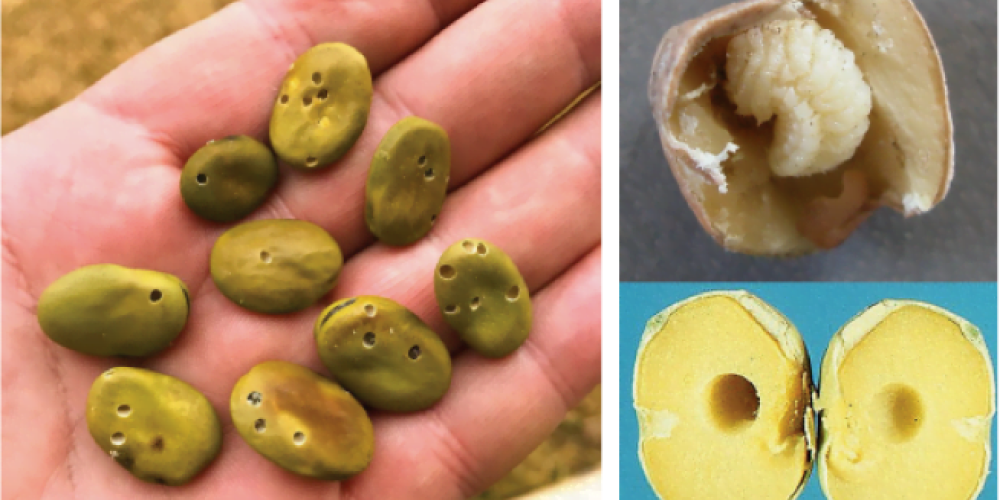Table of contents of the article
ToggleThe large bean beetle is an agricultural pest that poses a threat to bean crops, as it feeds on seeds and reduces their quality and productivity. In this article on your website, World of Plants, we will review the life cycle of this beetle and ways to combat it to preserve the crop.
Symptoms of the large bean beetle
- Name of the diseaseBruchus rufimanus Boh
- Scientific name: Bruchus rufimanus Boh
- Type of disease Family of disease: Insect type
- Disease family: Lariidae
Circular holes a little over 1 mm in diameter occur in the seeds of large, dry bean seeds saved from a previous crop and the larvae-like larvae are about 5 mm long and feed on the seed cotyledons. Adults are spotted beetles four millimeters long with black, brown and white scales, which can be found along with the seeds.
The species most closely associated with large bean seeds in Britain is Bruchus rufimanus and other seed beetle species are associated with the dried seeds of other legumes.
Causes of the large bean beetle
Autumn crops are at increased risk as flowering and pod formation are likely to coincide with adult activity.
Suitable conditions for the spread of the large bean beetle
It is active in the spring with its warm sun, moderate temperature, and blooming plant flowers.
Disease development cycle
The female lays eggs on the green bean pods during February and March, and the small larvae remain inside the grain until the bean is harvested. Then they turn into pupae in late August and early September, then they turn into a juvenile insect inside the bean and remain inside the bean until the grain is planted and the cotyledons open, then the beetles emerge. They hide under tree bark, in weeds, and in the soil until the pods of the new crop are formed. As for stored dry grains, the young beetles remain inside them until they die because they are unable to exit the seed. Therefore, infected bean seeds are considered the source of infection for the next crop.
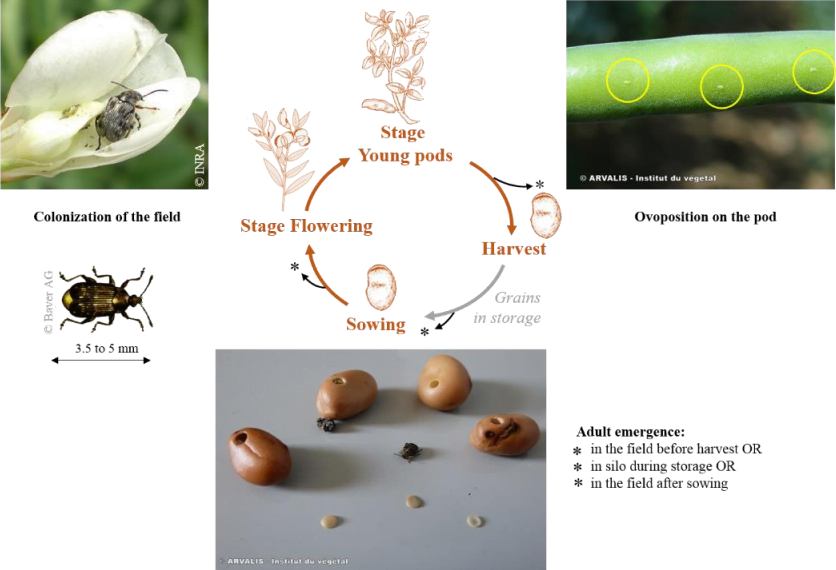
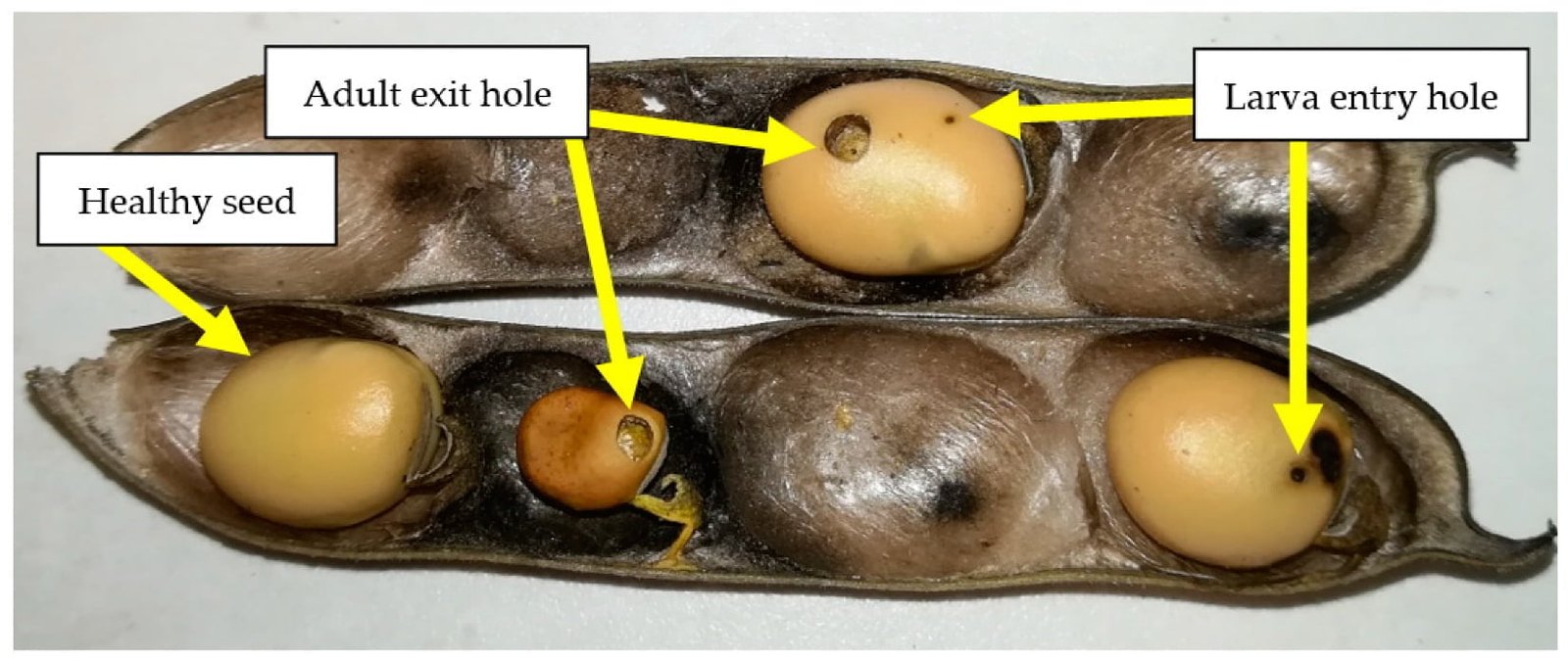
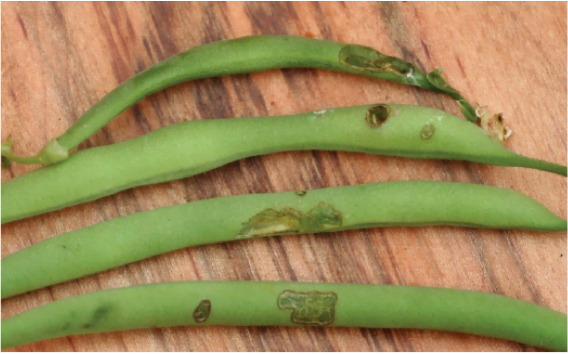
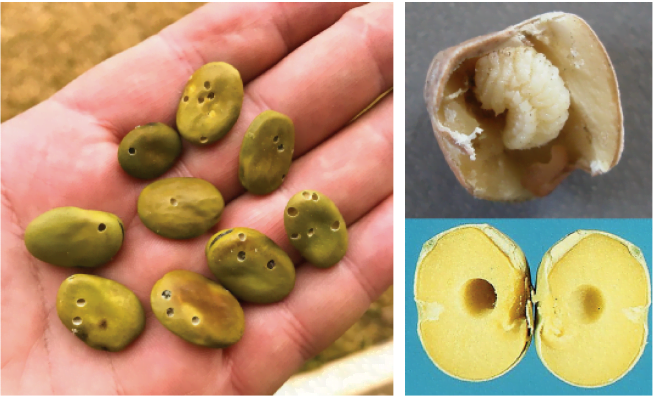
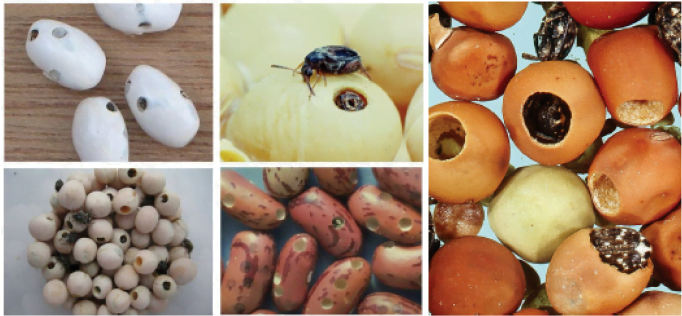
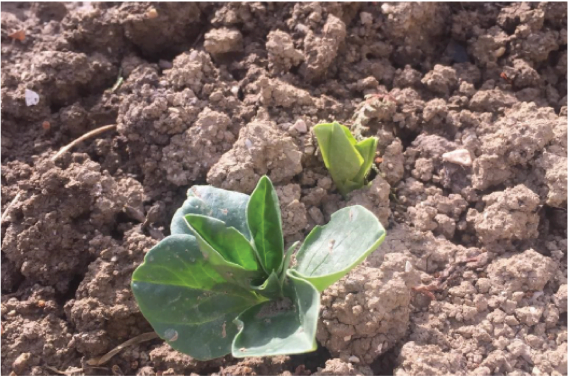
Losses of disease spread
This is amazing The insect only infects plants Beans have one generation per year, and they infect green bean pods during the months of February and March. The yellow larvae that entered the green beans remain inside the beans until harvest. This pest does not reproduce inside warehouses because it cannot infect dry beans.
Preventive measures to prevent the occurrence of the disease
Planting spring crops later can reduce the risk of damage. Autumn crops are at increased risk as flowering and pod formation are likely to coincide with adult activity.
Chemical control recommendations
- lambda cyhalothrin
- zeta cypermethrin
- deltamethrin
Anti-membership recommendations
The infestation can be reduced by selecting uninfected pomegranate seeds when planting. A parasite of the Braconida family, order Hymenoptera, has been found attacking the larvae of this insect in the field.
In conclusion, we would like to note that we, at the world of plants website, offer you all the necessary services in the world of plants, we provide all farmers and those interested in plants with three main services::-
- Artificial intelligence consulting service to help you identify diseases that affect plants and how to deal with them.
- Blog about plants, plant diseases and care of various crops ... You are currently browsing one of her articles right now.
- An application that provides agricultural consultations to clients, as well as a service for imaging diseases and knowing their treatment for free – Click to download the Android version from Google Play Store، Click to download the IOS version from the Apple App Store.
References
Bruchus rufimanus Boh – almerja
Large bean beetle - Hindawi Foundation
Broad bean seed beetle- RHS
Large bean beetle (bean bugs) – almerja




